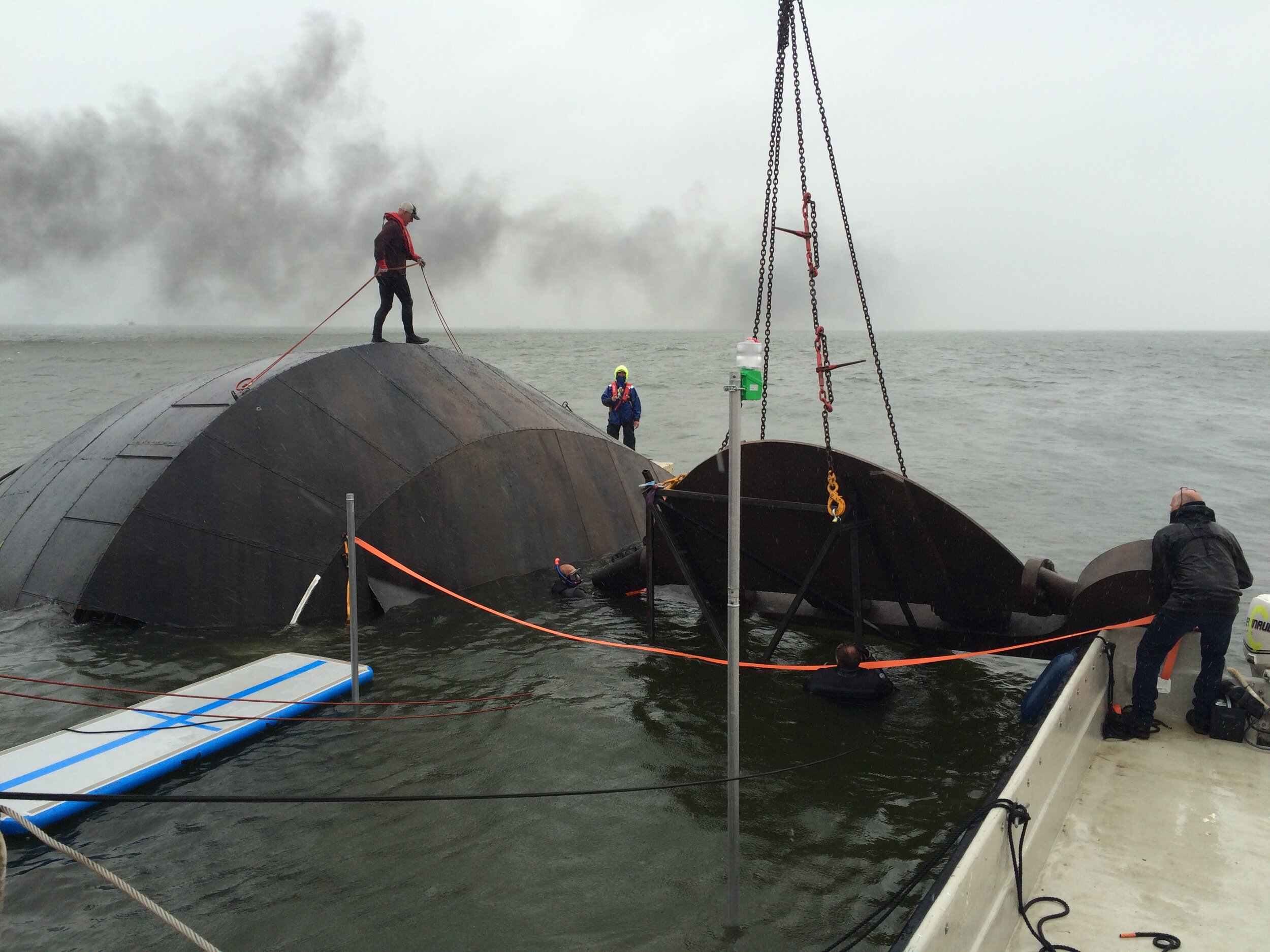
DUNKIRK
SUPERVISING ART DIRECTOR: I oversaw the art dept., which was comprised of three separate units. UK art dept., France/Belgium art dept. and LA art dept. UK covered the UK locations: dock, newspaper and train. France/ Belgium covered the Dunkirk locations and the sea sequences which were shot in Belgium. LA covered set design and administrative duties such as budget tracking and scheduling. There was also LA based photography centered around SPX/VFX related sequences. Each unit was comprised of art dept., set dec., props and construction. Self-sufficient, I merely tracked the progress. My main focus was on the ships and the planes. We utilized a number of specialty builders and our construction department to cover set manufacture. I traveled to Dunkirk and LA.




The magic from the team of Crowley and Nolan. A piece of trompe l'oeil. Painted troops utilized as deep background. Painted on heavy canvas and supported by metal mesh and stakes.




Radio-controlled scale aircraft were used. Most if not all of the aerial photography was practical.







For our aerial photography involving talent we utilized the Yak. It is a russian trainer aircraft. You can either control from the front or rear cockpit. We wanted to get talent safely into the air for air-to-air photography. By having the ability to pilot the aircraft from either the front or back cockpit allowed us to place the actor in the alternate cockpit. By having both we could shoot the actors faces or more over the shoulder for horizon and instrumentation.

Camera lens study. Specific parameters as far as position of camera and focal length of lens were provided by Hoyte and Chris. Each view shows what the camera and specific lens would see. Because of the federal flight safety requirements we needed to be strategic. Limit the modifications so not to alter flight control. Keep in mind the camera mounts harnessed a large IMAX camera. That alone was a feat.






















We built a scaled version of the medical ship. Set dec and rigging also built at scale. Crane used to support and sink the vessel.









A ship built to enable photography on the sinking vessel. An ingenious use of scenery laid out by our designer Nathan. Fore-shortened to cover the needed camera angles only. Never used as a wide or establishing shot. Also the shots were very dynamic/disorienting. It was designed to be the Maile Breze on one side and another battleship on the other. It was attached to a rig sometimes referred to as a rotisserie, this for its obvious capsizing like motion. In addition to the capsizing action was a sinking capability. It was installed at Fall’s Lake in Universal Studios.





Another usage of the Trompe L'oeil was this wreck. A flat painting.










This was another interesting practical solution for seeing a ship capsizing. Our VFX sup Andrew Jackson calculated a camera angle and move around the ship while in drydock. By arcing the camera around the static ship he could simulate the viewers’ perspective of the capsizing ship. He would then take this plate and set it in the water.







I was so surprised to see the actual target sight in action. It worked in the same way as the peppers ghost utilized by the Haunted Mansion at Disneyland for the dancing ghosts. An angled lens projected from below. This image seen on camera is what the pilot would see. What ingenuity.












This was our pyro version. Sections of the fuselage were replaced by materials that would allow us to control the burn. We had one shot at this as only one was made.



